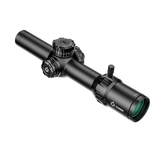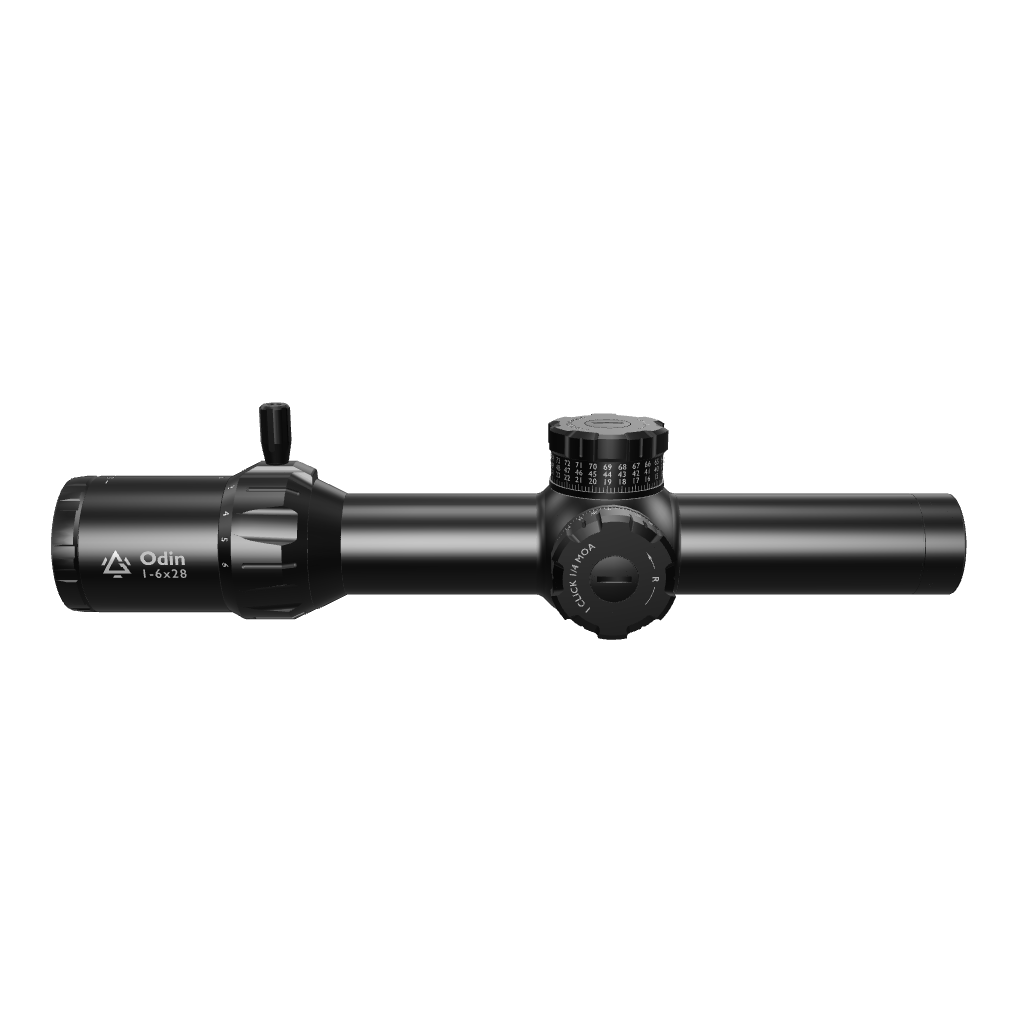How to Find the Best LPVO for Your .22LR Rifle
It’s time to whip out the old plinker. While LPVOs (low-power variable optics) are popular on centerfire rifles, they can also be a great fit for .22LR rimfire rifles.
An LPVO gives you a true 1× sight for those super-fast close shots and a solid magnification range for longer targets. LPVOs even work great on AK rifles.
In this guide, we’ll talk about rimfire LPVOs and whether or not they make sense on a .22. We’ll also show you what to look for, pros and cons, and generally how to choose the best LPVO for 22LR shooting.

Why an LPVO Works for .22 LR Rifles
Most gun enthusiasts who fit LPVOs to 10/22s are satisfied with the general flexibility because one optic covers both close and medium ranges. With an LPVO, you get a red-dot feel at low power with the magnified power of a scope.
Typically, you’re looking at rimfire rifles with average 100-yard ranges, so an LPVO generally makes sense because of three things:
- Fast target acquisition: A 10/22 LPVO offers super-fast target acquisition at 1× with both eyes open. This is crucial for hunting small game or just plain fun plinking.
- Convenience: At higher magnification (2-7× or 1-6×), you have great hold over on small targets at 50 to 100 yards without having to swap optics.
- Ease of use and reticle flexibility: Many LPVOs include reticles with holdover marks or BDC patterns made for common rimfire distances. You can make quick corrections on the fly.
For more info on setting distances and holdover, please refer to our scope magnification chart.
Advantages and Disadvantages of Using LPVO on .22 LR Rifles
Let’s talk about the pros and cons so you might have a clearer, overall picture of what you’re looking for in a 10/22 LPVO. Keep the tradeoffs in mind before you decide to make a purchase.
Advantages
- Versatility: One optic for close shots and for precise, slightly longer shots. Good for field use and range use.
- Faster than swapping: With a .22LR plinking LPVO, you get a 1× mag setting that’s obviously better than switching from a red dot to a magnified scope.
- Modern reticles: Some LPVOs are specialized. You got rimfire-friendly reticles (ACSS 22LR, chevrons, or fine crosshairs) for quick holds and convenient handling. Though some may cost more than your standard run-of-the-mill LPVOs.
Disadvantages
- Parallax and focus: Mid-tier, and sometimes cheap LPVOs have parallax set for 100 yards or lack close-range correction. This blurs impacts at 25–50 yards, where .22 shooters often run their platform at. It’s very important to test out your overall parallax adjustment beforehand.
-
Cost vs. reward: High-quality LPVOs can be really expensive. Some shooters decide a simple rimfire scope or red-dot and magnifier is more economical for casual plinking.
- Reticle thickness and clarity: Tactical LPVO reticles for centerfire use can be too heavy for tiny .22 targets. You should always look for thin reticles or rimfire designs.

Factors To Consider when Choosing an LPVO for 22LR Rifles
Before finally going for an LPVO for your 22LR plinker, there are important factors to carefully consider. Here’s a nifty checklist for your comparison:
- Magnification range: Aim for an LPVO with a useful low end (which would be a true 1×) and a modest high end. 1-6x and 1-8x are common types and great for close targets to 100 yards.
- Parallax / close focus: Choose an LPVO with parallax adjustment down to 10-25 yards or one with adjustable objective/side focus. Fixed-parallax scopes set to 100 yards can be a hassle for most shooters because of the parallax.
- Reticle style: Always pick thin crosshairs or a rimfire-specific reticle. ACSS 22LR reticles and small chevrons are popular because of their holdover functionality. Thick tactical reticles can obscure small targets.
- Eye relief and mounting height: Ruger 10/22 and other rimfires often sit lower, so it’s best if you choose rings that keep a low cheek weld and give comfortable eye relief at low magnification. Always measure and confirm your tube size and ring specs.
-
Weight and balance: A heavy LPVO can upset the handling of a compact rimfire. Lighter LPVOs let you maintain solid handling and maneuverability for hunting and fast shooting.
- Turrets vs. holdovers: Turrets are fine for bench or target work. For field use, a reticle with clear hold points often beats dialing turrets mid-hunt.
- Price vs. performance: If you plan to shoot seriously at 100 yards with a .22, invest in a quality optic with true parallax control. For casual plinking, budget LPVOs or dedicated rimfire scopes might be a better value.

Conclusion
Finally, we strongly recommend you first mount and test before you commit to buying. Here’s a quick checklist before you buy:
- Does it offer true 1×?
- Can you adjust parallax down to 10–25 yds?
- Is the reticle fine enough for small targets?
- Is the weight suitable for your rifle?
If possible, mount your LPVO on a 10/22 or whatever 22LR rifle you run and test at 10, 25, 50, and 100 yards. Of course, you should also check focus, parallax, and reticle clarity at your preferred distances.
According to some community threads and reviews, many people change optics after testing because close-range parallax or thick reticles can definitely ruin the shot picture.
If you are new to different optic types and how they work, you can learn more by reading our beginner's guide to rifle optic types to help you get started.
Affordable Gunnr LPVOs for your 22LR
At Gunnr, we also cater to any rimfire shooting needs you may have. That’s why we give you the Gunnr Odin 1–6×28 LPVO, which offers a clear picture with the Schott glass, multi-layer coating technology, smooth turrets, and crisp reticle illumination.
The Gunnr Odin offers a low-range parallax setting and a compact, lightweight tube. It’s perfect for shooters on a budget, and its compact profile and balanced weight could make it a favorite among Ruger 10/22 LPVO rifle enthusiasts.







